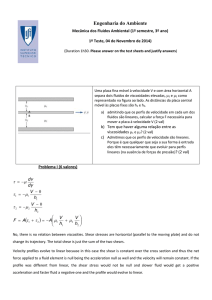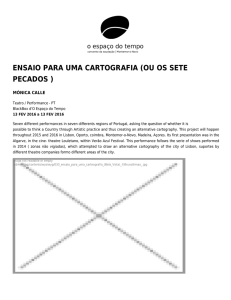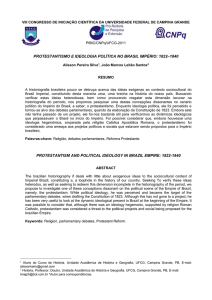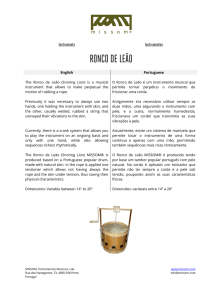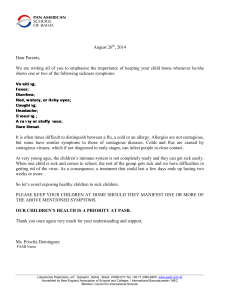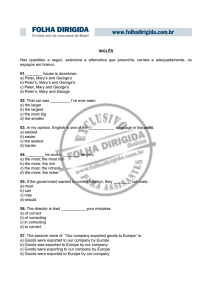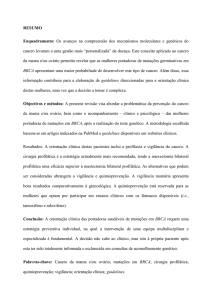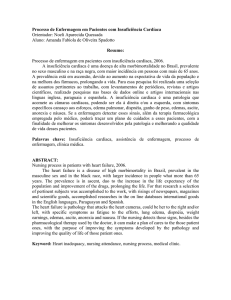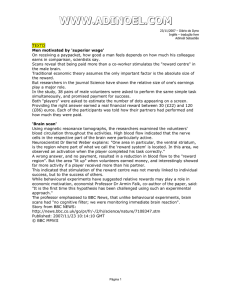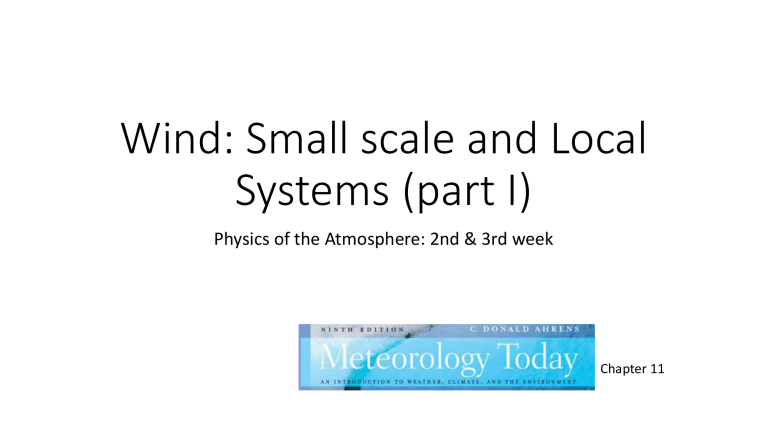
Wind: Small scale and Local
Systems (part I)
Physics of the Atmosphere: 2nd & 3rd week
Chapter 11
Tradictional classification of scales
Microscale
Mesoscale
Microscale: The Force of the Wind
1
F C d Uw2 A
2
Microscale: LIFT Force
1
F C L Uw2 A
2
Non-propeled flyers need vertical winds to
compensate velocity loss due to Drag.
Understanding Microscale: Fluid Mechanics
The Bernoulli Equation:
1
P U 2 gz C te
2
Centrifugal force:
Force on a aerofoil: Lift &Drag
1
2
FL C L Uw A
2
1
2
Fd C d Uw A
2
Friction: Boundary Layer (BL)
http://wwwmdp.eng.cam.ac.uk/web/library/enginfo/aerothermal_dvd_onl
y/aero/fprops/introvisc/node7.html
Inside a BL inertia
and friction forces
coexist and are of the
same order of
magnitude.
Boundary Layer Evolution
https://www.youtube.com/watch?v=WEX72jeXTGM
http://www.tutorhelpdesk.com/homeworkhelp/Fluid-Mechanics-/LaminarBoundary-Layer-Assignment-Help.html
Atmospheric Boundary Layer
http://www.engr.ucr.edu/~marko/urban_rural_field_measurments.htm
Boundary Layer
Separation
ui
dui
ui
p
uj
t
dt
x
xi x j
j
u j ui
x
j
p
x i x j
ui
x
j
ui
x
j
g i
• Friction can only stop the flow. It can’t reverse it.
• Negative pressure gradient (left side) pushes the flow forward. It will not
reverse it.
• A positive pressure gradient (right side) can reverse the flow. The first fluid to
inverse the velocity is the fluid with lower velocity (lower inertia) close to the
wall.
Boundary Layer separation around bodies
When curvature is strong,
pressure is low at the center of
the curvature. The favorable
pressure gradient between the
front and the top of the obstacle
accelerate the fluid, being
responsible for the maximum
velocity at the top. The adverse
pressure gradient in the back is
responsible for the boundary layer
separation in the back.
Main Forces in each scale
p
ui
coriolis
x i x j
t
u j ui
x
j
p
x i x j
ui
x
j
Convective inertia +
pressure + friction
Temporal inertia +
Coriolis+pressure +
friction
ui
x
j
Pressure + Coriolis. They
almost balance. This
allows easy calculation of
the geostrophic wind.
Friction. How does it occur
Diffusion
Figures below represent 2 material systems, one fully white and the other fully
Black separated by a diaphragm. The top figures represent the molecules
(microscopic view) and the figures below the macroscopic view. When the
diaphragm is removed the molecules from both systems start to mix and we start
to see a grey zone between the two systems (b) at the end everything will be grey
(c). During situation (b) we there is a diffusive flux of black molecules crossing the
diaphragm section. This flux cannot be advective because velocity is null.
(a)
(a)
(b)
(b)
(c)
(c)
Diffusivity
When the diaphragm is removed molecules
move randomly. The net flux is the diffusive
flux.
Cx
Cx+∆x
d cl cl l ub
c
d l.ub
l
The flux of molecules in each sense is
proportional to the concentration and to the
individual random velocity:
But,
c
cl cl l l
l
Diffusivity is the product of the displacement length
and the molecule velocity. This velocityis in fact the
difference between the molecule velocity and the
average velocity of the molecules accounted for in the
advective term.
Ver texto sobre propriedades dos fluidos e do campo de velocidades
Diffusivity
• Diffusivity is definide as:
l.ub
u b is the molecule velocity part not resolved (or included) in our
velocity definition. In a laminar flow is the brownian velocity
while in a turbulent flow is the turbulent velocity, a
macroscopic velocity that we can see in the tubulent eddies.
l is the lenght of the displacement of a molecule before being disturbed
by another molecule (or of a portion of fluid in a turbulent flow). When
the molecule hits another molecule it gets a new velocity.
• Diffusivity dimensions are:
L2T 1
Diffusive Flux
• Is the flux due to difusivity and property gradient:
Dif
c .ndA
A
c
A x j
n j dA
• The sense of the diffusive flux is opposit to the sense of the gradient.
• Diffusive flux is nul if there is no gradient.
E no caso da quantidade de movimento?
• Escoamento com gradiente
de velocidade.
• Se uma porção de fluido (e.g. molécula) desce da zona de
maior velocidade para a de menor, vai aumentar a velocidade
nessa zona. Nesse caso uma porção igual de fluido subirá e irá
reduzir a velocidade em cima.
• Na presença velocidade aleatória e de gradiente de
velocidades, o fluido mais rápido arrasta o mais lento. De
acordo com a Lei de Newton, a uma aceleração corresponde
uma força, que neste caso é uma força de atrito.
• À difusividade de quantidade de movimento chama-se
viscosidade, que pode também ser vista como a relação entre
a tensão de corte (atrito) e a taxa de deformação de um
elemento de fluido (gradiente de velocidade).
Fluxo difusivo de Quantidade de Movimento
e Tensão de Corte
τ(y+Δy)
τ(y)
• O movimento aleatório não representado pela velocidade
origina um fluxo de quantidade de movimento que é sentido
como uma força (força de corte). Esta força aumenta com o
gradiente de velocidade e depende da quantidade de massa
que é necessário acelerar e da taxa a que a massa se move.
u
u
y
y
Nesta equação as unidades da viscosidade
(dinâmica) são (força/área)/segundo = >N/m2/s,
Poiseuille no SI)
Turbulent diffusivity/viscosity
• The need is the same as the molecular diffusivity: in turbulent flows
there are random eddies that we can not describe/measure. The
random velocity associated to them originates fast mixing.
• Mathematically the effect of those eddies is represented by a
turbulent diffusion, where diffusivity is also
t l t .ut
• But now, the length is size of the eddies and the velocity is their
displacement velocity.
Atmospheric stability
and diffusion
Why is vertical diffusion
enhanced by atmospheric
instability?
Stable
Unstable
Thermal instability mixes air vertically and thus also
transports momentum, reducing velocity gradient
Air pockets: BL separation
Idem
Shelterbelt
Wave generation
Pedaling in the wind
1
2
Fd C d Uw A
2
Wind Power
What is the maximum energy that a 80 m diameter turbine can
extract from wind when air velocity is 3 knots?
Summary
• Atmospheric processes can be grouped into 3 scale ranges: microscale, mesoscale
and macroscale. The latter is usually subdivided into synoptic and global scales.
• At microscale (up to tens of meters) the most important processes are convective
acceleration, pressure and friction. At this scale the flow fits in the range of
aerodynamics, i.e. is the flow around man-made constructions.
• At mesoscale (tens of kilometers) the most important processes are temporal
acceleration, Coriolis and pressure, although friction can also play some role. At
this scale heat exchange/temperature play a major role. The flow across
mountains and the sea breeze are examples of mesoscale flows. Processes
responsible for cloud formation and for rain happen on this scale.
• The synoptic scale is the one usually represented into meteorological charts
(thousands of kilometers). At this scale pressure and Coriolis are the most
important driving forces and thus the flow is mostly geostrophic. The global scale
describes the flow over the whole world. Meteorological forecasting requires the
simulation of this scale.

